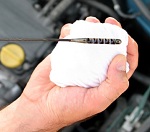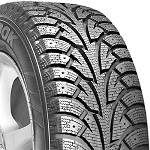From students on a budget to families and retirees, we can all benefit from reduced automobile operating expenses. The great news is that it’s easier than you might think to make this happen. Bottom line: there’s more to car maintenance than just dropping it off with the mechanic every so often!
Go easy on gas
 With worldwide petroleum prices constantly on the rise, fuel is an obvious cost you can try to reduce. There are a few ways to do this, starting with reducing overall fuel consumption. Where possible, consider walking, riding a bicycle, choosing a gas efficient car, or using public transportation to run some of your local errands.
With worldwide petroleum prices constantly on the rise, fuel is an obvious cost you can try to reduce. There are a few ways to do this, starting with reducing overall fuel consumption. Where possible, consider walking, riding a bicycle, choosing a gas efficient car, or using public transportation to run some of your local errands.
Another great way to save on fuel costs is by using reward programs. Many companies offer discounts and rewards as an incentive to generate customer loyalty. Check here for a breakdown of several top programs that are available to the average consumer.
Keep your car in check
 Vehicle maintenance is another significant running cost that you can reduce with proper planning. Prevention is your best friend here, as having your car regularly serviced will maintain its reliability while helping avoid the need for costly major overhauls. Furthermore, a well-maintained engine will burn fuel more efficiently, meaning this will help keep your overall fuel costs down.
Vehicle maintenance is another significant running cost that you can reduce with proper planning. Prevention is your best friend here, as having your car regularly serviced will maintain its reliability while helping avoid the need for costly major overhauls. Furthermore, a well-maintained engine will burn fuel more efficiently, meaning this will help keep your overall fuel costs down.
- Apart from regular servicing, there are a few regular tasks you can perform yourself that will also help avoid bigger, more costly problems. Monitoring your engine’s oil and coolant/antifreeze levels is a terrific example, both easy to do and highly important. Motor oil is essentially the lifeblood in your car’s engine, maintaining proper lubrication and preventing metal on metal contact between your engines’ various parts.
- Make sure you check your engine oil level at least once a month, and be sure it gets changed in accordance with the frequency recommended in your car’s operating manual.
- Antifreeze or coolant level is just as important, preventing the major damage that can occur when your car’s engine exceeds its recommended temperature range. In most cars it’s easy to check coolant/antifreeze level, so you might as well take a look while you’re checking your oil. Also, coolant/antifreeze should be changed roughly every 2 years / 40,000 Km or 24,000 miles – again, check your operating manual to be completely sure.
Don’t forget about your tires
 Related to maintenance, tire wear can quietly lead to bigger problems and higher automobile operating costs. Regularly check your tires for proper tread and air pressure to avoid problems with alignment and suspension. As an added bonus, properly maintained tires also help lower fuel consumption.
Related to maintenance, tire wear can quietly lead to bigger problems and higher automobile operating costs. Regularly check your tires for proper tread and air pressure to avoid problems with alignment and suspension. As an added bonus, properly maintained tires also help lower fuel consumption.
Check out this great video illustrating how to check your tires.
Go green
 Finally, if possible, consider the financial benefits of driving a hybrid or alternative fuel vehicle. These cars will obviously lead to reduced ongoing fuel costs, but can also save you money thanks to government tax incentives. These incentives vary from province to province in Canada, and can change each year with new laws and initiatives.
Finally, if possible, consider the financial benefits of driving a hybrid or alternative fuel vehicle. These cars will obviously lead to reduced ongoing fuel costs, but can also save you money thanks to government tax incentives. These incentives vary from province to province in Canada, and can change each year with new laws and initiatives.
Check the Canadian forum on Hybrid Cars for up to date information that’s specific to where you live.
These are just a few suggestion that we’ve tried and tested. Do you have any green tips for lowering your driving cost?
This article was written by Jeff a friend of Vouchercodes.ca who has a real talent on watching the pennies. Don’t hesitate to submit to us any article that might be helpful to the community! Thanks.

Lovely, thank you